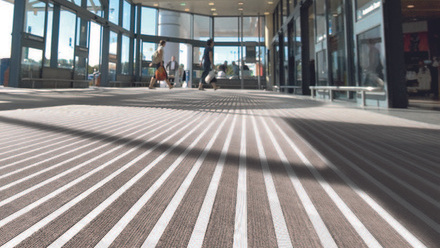Functionality, visibility, sustainability: the simpler approach to specification
Certain obstacles can impede this process, though, including the lack of ease of sourcing décors with the desired finishes, a lack of readily available technical information, and difficulties understanding what product finishes are available.
Let's look at how these issues can be resolved.
The move from office-based working to working from home or hybrid models has upended business practices across all industries, including architectural and interior design specification. Its long-term impact on professional development continues to unfold in unexpected ways, including knowledge pooling. Where once designers would sit in the same office and use each other's expertise to fill potential knowledge gaps, working from home has reduced access to this invaluable communal resource.
Though this is nobody's fault, the impact of this on a project is clear, especially for more junior employees taking their first, formative steps in the sector. In areas requiring specialist knowledge such as surface specification, the inability to easily consult more experienced colleagues may lead to the specification of lower quality or poorly suited materials.
This knowledge vacuum is further compounded by the continuing phaseout of the librarian role within architecture practices. Previously, this role was invaluable to designers looking for specific material samples or product information. As the price of property continues to rise, many practices simply do not have the floorspace to maintain a library, and by extension, employ a librarian to maintain it.
This is not a situation architecture practices can fully control, but the impact remains the same: a loss of key support mechanisms during the surface specification process. Surfaces can already present concerns for designers, with an often-overwhelming level of options available. Multiple factors must be considered depending on the application, including durability, ease-of-maintenance and what specific product properties are required.
But having to hand a readily available reference guide that clearly provides key technical data and product information to the reader will help support the specifier in making an informed decision. In an industry where knowledge gaps can have a major impact in securing alternative materials; for example, if a fabricator informs a designer mid-project that a specified surface is not available in a certain decor, looking to the manufacturer for assistance could save time and money.
This expertise is instrumental to streamlining the surface selection process. While maintaining awareness of product data may be more challenging given today’s agile working culture, leveraging supply chain support can allow greater clarity and simplicity.
Designers should include their appointed surface provider into the project’s documents as standard so they can assist with any technical or availability questions the fabricator or installer may have. This approach allows the specifier to remain focused on the project at hand. Engaging a supplier that can offer RIBA-accredited CPDs on this topic is critical to ensuring both continued compliance and an easier decision-making process when selecting surfaces.
The need for peace of mind over product information is further underlined by the growing focus on sustainable products in building design. Indeed, sustainability has moved from a preference to a priority over the past decade. Though this is clearly welcome, the relative newness and fast-changing nature of environmental regulations may present difficulties around remaining compliant during surface specification. Greenwashing also remains a topic of concern, with unproveable product claims further muddying the waters over which products are actually made using sustainable methods, technologies and materials.
In these circumstances, it is again vital that designers look to their supply chain to educate and simplify what is required in each specific product category. Sustainability-related data should be easily available for all surfaces. This includes product passports that list full and clear material composition (such as the three pillars – comfort and health, natural resources, and circularity), plus its total carbon footprint cost from manufacture to transport.
In conclusion, changing working practices risk the creation of potential knowledge vacuums for design firms. To address this on a project-by-project basis, company stakeholders should look to their suppliers as – instead of a manufacturer of surfaces and panels – a trusted advisor, any awareness gaps will be filled and selection processes simplified.




